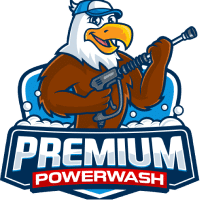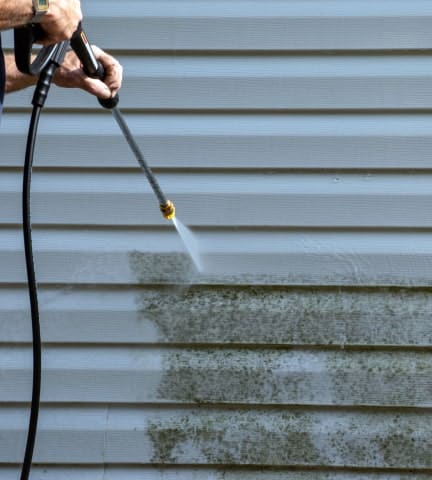Portland, Oregon is known for its breathtaking natural beauty, which often contrasts with the moss and mildew that can build up on the exterior of our homes quicker than you can say ‘Timber’. For the novice DIY-er or seasoned homeowner, pressure washing can be a game-changer, reviving the luster of your home’s facade and ensuring it stands proud against the backdrop of one of America’s greenest cities.
This guide is constructed to inform and empower Portland residents to take up the sprayer, to banish grime, and to do so with care and environmental consciousness. Here are the salient points to consider before you power up that pressure washer.
Section 1: Assessing Your Home’s Surfaces
Before you even think about what kind of equipment you want to rent or buy, take a walk around your home. Portland’s climate can be unpredictable, with substantial rain and moderate temperatures that are perfect for promoting the growth of algae, moss, and other organisms on your home’s exterior.
What Surfaces Can Be Pressure Washed?
Most surfaces can benefit from pressure washing when done correctly:
- Concrete Driveways and Pathways – Oils stains from cars and the natural buildup that occurs over time.
- Home Siding – Vinyl, wood, brick, or stucco need a good clean every few years to maintain their integrity.
- Decks and Patios – Any wooden structures or pavers can lose their slip resistance if left unclean.
- Fencing – Especially wooden fencing, which has a more porous surface that can hold onto dirt and grime.
- Vehicles – Pressure washing your car, truck, or boat is a greener alternative to frequent hand washing, depending on the vehicle’s condition and materials.
Surfaces to Avoid
High-pressure water can be damaging to certain surfaces:
- Roofing – Particularly shingled roofs can be easily damaged by high-velocity water. Use a low-pressure, wide-spray nozzle.
- Older Mortar – Pointed too closely, pressure washers can dislodge mortar which needs to be preserved when possible.
- Windows and More Delicate Surfaces – For glass and painted surfaces, ensure you use the lowest pressure setting and the correct nozzle.
Understand and mark the areas where pressure washing is not advised.
Section 2: Selecting the Right Equipment
With a good understanding of what needs cleaning, it’s time to look at the kind of tools you’ll need. Pressure washers come in a variety of sizes and strengths, measured in pounds per square inch (psi).
Choosing the Right PSI
- Under 2,000 PSI – For lighter, more infrequent use like cleaning your car or bicycle.
- 2,000 to 2,800 PSI – The mid-range is perfect for most home applications—driveways, patios, and home siding.
- Over 2,800 PSI – Industrial-grade and overkill for most residential jobs, but could be necessary for extensive concrete or commercial applications.
Additional Equipment
- Nozzles – Adjustable nozzles with a wide variety of spray angles are best for home use. Reducing or increasing the pressure by adjusting the angle rather than changing the nozzle completely is more efficient.
- Extension Wands – For higher reaches, especially when cleaning siding, a longer wand can save the need for a ladder.
- Chemical Injectors – Some models will have built-in reservoirs for adding solutions, like a bleach mixture for mold, or a degreasing soap for concrete.
Section 3: Safety First
Power washers are not toys. They’re robust, powerful tools that can be very dangerous if used incorrectly. Here are some basic safety guidelines everyone using a power washer should adhere to:
Protecting Yourself
- Eye Protection – At a minimum, safety glasses are a must. The high-speed spray can do serious damage if it contacts your eyes.
- Long Clothing – Protect your skin from debris and spray-back with long sleeves and pants.
- Closed-Toe Shoes – Never pressure wash in sandals or bare feet. If the hose gets underfoot, the force of the spray could cause injury.
Protecting Others
- Clear the Area – Ensure nobody is around the work area, including pets. The high-pressure jets can be fatal at close range.
- Warning Signs – When pressure washing near common areas, put up signs to deter passersby.
Section 4: Preparing Your Workspace
Efficiency and safety are paramount when pressure washing. Here are some steps to ensure your workspace is ready:
Basic Preparations
- Close All Windows and Doors – This is to avoid water entering your home, or under the siding causing mold.
- Turn Off Electricity – If you’re washing the siding, cut off power to any outdoor outlets and cover them.
- Move Obstacles – Pick up anything you wouldn’t want to get wet or potentially blown around by the force of the water.
Chemical Considerations
- Eco-Friendly Solutions – Portland is known for its green initiatives. There are many eco-friendly detergents you can use.
- Local Regulations – Be aware of any water usage restrictions in your neighborhood. Draining directly into storm sewers may not be allowed.
Section 5: Techniques for Effective Cleaning
Pressure washing seems straightforward, but there are finesse and technique required for the best results.
The Right Distance and Angle
- Start Far Away – People often make the mistake of starting too close to the surface, which can cause damage. Start a few feet away and move in slowly until you reach the optimal distance for cleaning.
- Keep a Consistent Angle – A 45° angle is generally best to avoid leaving streaks or causing damage.
Working in Sections
- Overlap Strokes – Each pass should overlap the last by about 1/3, much like mowing a lawn.
- Top to Bottom – Begin at the top and work your way down. This way you’re not revisiting areas that have already been rinsed.
Timing and Surface Sensitivity
- Wood Care – If cleaning a wooden surface, use gentler soaps designed specifically for wood, and keep the nozzle at least a foot away to avoid gouging.
- Mold and Dirt – Give cleaning solutions time to work. Apply, wait a few minutes, then wash off. This is particularly important for mold and moss.
Section 6: After Pressure Washing
You’ve invested the time and effort into cleaning. Finish strong with these post-cleaning tasks.
Draining and Storing the Equipment
- Clear the Lines – Run clean water through the system to flush out any detergents.
- Store Indoors – If you’ve rented a pressure washer, ensure it’s completely dry before returning it to avoid rust.
Inspecting for Damage
- Check Surfaces – Look for damage or areas where the high-pressure water got under the surface, which can happen with older sidings or improperly installed windows and doors.
- Revisit – Look over your work a couple days later, as surfaces can look different once they’ve fully dried.
Section 7: Hiring a Professional
Sometimes, despite the best of intentions, DIY pressure washing can be too much of a challenge or risk. This is when it’s time to call in a pro.
Signs You Should Hire a Pro
- Complexity – If your exterior has lots of nooks and crannies, a professional may have more tools and skills for the job.
- Injuries or Mistakes – If you’re unsure about your ability to use a pressure washer safely, you’re better off letting a professional tackle the job.
- Time and Cost – Consider the value of your time, especially when DIY doesn’t save much money over a professional service.
Choosing a Reputable Professional
- Local Reviews – Check for local testimonials and reviews, particularly from Portland homeowners who face similar exterior year-round cleaning challenges.
- Certifications – If applicable, certifications from the PWNA (Pressure Washer’s Association) can guarantee a certain level of skill and expertise.
Discussing your Project
- Estimates and Expectations – Get a detailed estimate, and walk through your expectations, including any delicate surfaces or landscaping that will need to be considered.
- Ask Questions – If there’s anything you’re unsure about or any concerns, don’t hesitate to ask before the project begins.
Section 8: Supporting Your Local Community
Finally, as part of the Portland community, it’s important to consider the impact of your actions and seek ways to give back.
Reflect on Water Usage
- Water Conservation – Always be mindful of water usage and try to accomplish tasks during off-peak hours or times of abundance.
- Education and Sharing – After completing a successful pressure-washing job, share your experience and any eco-friendly tips with neighbors and friends.
By following these tips and taking a thoughtful approach to pressure washing, you’re not only enhancing your home’s curb appeal but also contributing to a greener, cleaner Portland. There’s a certain satisfaction in DIY projects, especially when they align with community values and when they come with the added bonus of strengthening a connection between you and the vibrant city of Portland, Oregon.

